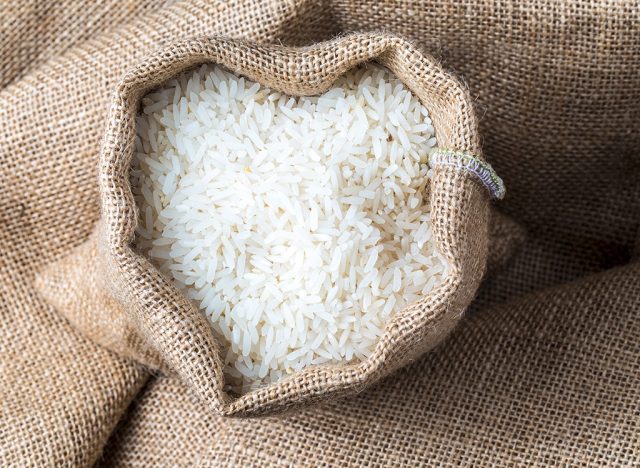If anyone has ever told you to watch your blood sugar, they may have also told you to limit your “white” foods. Oftentimes, health practitioners will rattle off all white, starchy items like potatoes, white pasta, desserts, white bread—and of course, white rice.
As a registered dietitian and certified diabetes educator, I’m here to tell you that white rice can be part of a healthy, balanced diet—not to mention all those other white foods, as well. With a little attention to a balanced plate, you can certainly include white rice in your diet if you prefer it over brown rice or other alternatives.
Dispelling white rice myths


It’s true that white rice is mostly starch. Like most white grains, when processing white rice, the outer husk, which contains fiber, is removed in addition to the inner germ that contains nutrients. Vitamins and minerals from the germ are later added back in after processing.
As a whole grain, many are of the belief that brown rice is generally better for you than white rice. While the bran and germ content of brown rice is richer in organic fiber, vitamins, and nutrients, when comparing brown to white rice cup for cup, they contain nearly the same amount of total carbohydrates, with white rice at 45 grams of total carbs per cup and brown at 46 grams. Furthermore, the difference in fiber is roughly three grams per cup.
How to include white rice into your diet while being mindful of your blood sugar
A balanced meal should contain a protein source, a healthy fat, a carb, and oftentimes a vegetable. When considering all these components, simply adding foods of nutritional value to a starch like white rice can set you up for more balanced blood sugars.
Additionally, a well-balanced plate can increase the likelihood of your meal improving your blood sugar response, especially in comparison to those that are missing these components. One easy way to create balance with a white rice-centric meal and improve your blood sugar response after eating is to add high-fiber foods like vegetables or other whole grains to your plate.
Keep in mind that some cuisines may incorporate several starches within a single meal. For example, many Mexican dishes include a combination of rice, beans, and tortillas. Similarly in Indian cuisine, it’s not uncommon to see rice, lentils, and veggies together.
Finally, when ordering or creating a well-balanced meal that includes white rice, you should also consider the other starches you’re pairing with it to ensure you’re actually striking the appropriate balance for you to keep your blood sugars in check. Add some protein fat and plenty of fiber to your place, too, and your blood sugars will thank you!
Caroline Thomason, RDN
Source:










